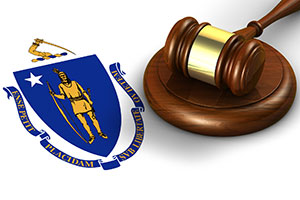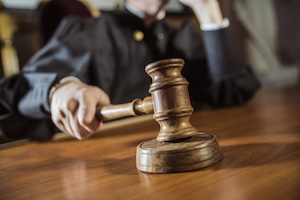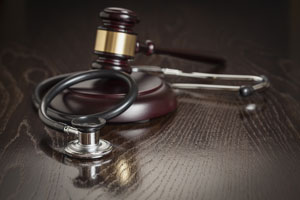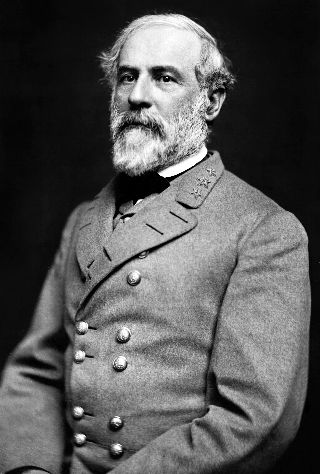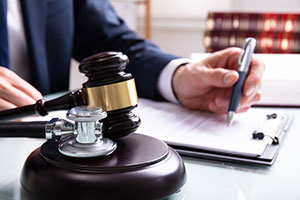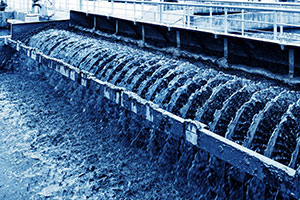Kenneth Richards beat his wife to death with a baseball bat in their Massachusetts home. He testified at trial that he acted in self defense after his wife stabbed him in the chest. A jury found him guilty of first-degree murder.
While Richards was in the hospital recovering from his stab wound, he gave the police a statement that was used against him at his trial. On appeal, Richards argued that an effective lawyer would have called an expert witness to challenge the voluntariness of that statement. The appellate court agreed that the lawyer erred but affirmed the conviction.
Facts of the Case
The Rowley police received a 911 call from Richards’ young daughter, who advised the dispatcher that her father had a hole in his stomach. When the dispatcher asked why, the daughter said that her mother might have dug the hole. She also told the dispatcher that there might also be something wrong with her mother.
An EMT found Richards covered in blood with a knife at his side. Richards had the kind of lacerations on his hands and arms that are consistent with defending against a knife attack. The EMT also observed that Richards’ wife was dead and that her skull had been fractured.
Richards was rushed to the hospital. Emergency surgery saved his life. Just prior to the surgery, he was given anesthesia and muscle relaxants. During surgery, he was given powerful opioids, including fentanyl and morphine.
As Richards was being transferred to the ICU following his surgery, a nurse asked him if he knew why he was in this hospital. Richards responded, “I stabbed myself and I killed my wife.” He complained of pain and was given additional morphine.
Twenty minutes later, while Richards was still under the influence of narcotics, the police questioned him in the ICU. Interrogating suspects while they are under the influence of thought-altering drugs is an unfortunate but common police practice.
Although Richards was mumbling, not always coherent, and complaining of pain, the police gave him a Miranda warning and accepted his statement that he understood his rights and was willing to waive them. The police made no inquiry into the effect of narcotics on his thought process.
Richards told the interrogating officers that he beat his wife with a bat because she was cheating on him. When asked whether she provoked him, he answered “no.” During another interview a few hours later, while he was still being treated with narcotics, Richards provided similar information and added that he stabbed himself in the chest after cutting his wrists and neck.
Trial Testimony
A state crime lab employee, identified as a forensic biologist, testified about bloodstain patterns. In the expert’s view, some of the bloodstains were consistent with hitting the victim after she stopped moving.
A medical examiner who autopsied the victim testified that she died from blunt injuries to the head. He opined that the victim died about fifteen to thirty minutes after the attack.
The defense consisted almost entirely of Richards’ testimony. He testified that he argued with his wife about her decision to stop taking medication for her bipolar condition. Richards said that at some point after they went to bed, he woke to find his wife kneeling over him. He fell out of bed and had difficulty breathing. At that point he noticed a hole in his chest.
Richards testified that he picked up a bat and used it as a crutch to help him stand. He saw his wife coming toward him and he swing the bat. He told the jury that he was in fear for his life and wasn’t thinking rationally. He said he only recalled hitting her once but conceded that he might have hit her multiple times.
Voluntariness of Confession
Richards’ trial testimony could be reconciled with the physical evidence but it was wholly inconsistent with statements he gave to the police while he was hospitalized. Although Richards’ lawyer challenged the admissibility of those statements, he failed to support that challenge with expert testimony.
The constitutional right to be free from self-incrimination has two components. First, it allows statements a defendant makes to the police to be used as evidence only if they were made voluntarily. Police officers cannot torture suspects to produce a confession. Nor can they use coercive tactics, although courts have a narrow definition of “coercive.” For example, the police can lie to suspects about evidence they don’t have in order to trick a suspect into giving a confession.
Second, suspects must be warned that they have the right to remain silent. The Supreme Court’s Miranda decision was a response to decades of inconsistent court decisions about whether a confession was voluntary — decisions that often excused the infliction of psychological abuse as a tactic to encourage confessions. If a suspect is warned that a statement will be used against him, and is warned that he can choose to remain silent or to consult with a lawyer before deciding whether to answer questions, a suspect who chooses to talk is presumed to have given a voluntary statement.
The Miranda warning is only required if the suspect is in custody. Whether a hospitalized suspect is “in custody” depends on the facts, but the issue did not arise in Richards’ case because he was given a Miranda warning before he was questioned. The question was whether, given his drugged condition, he was capable of understanding his rights or of making a voluntary statement.
Richards’ Expert Witness on Voluntariness
After Richards lost his appeal, he filed a post-conviction motion asking for a new trial. He contended that his trial lawyer was ineffective for failing to use expert testimony in support of his motion to suppress his confession.
Richards’ motion for a new trial relied on the affidavit of Dr. Adam J. Carinci, the director of the Massachusetts General Hospital Center for Pain Medicine. Dr. Carinci is board certified in anesthesiology and pain medicine. Based on a review of medical records, Dr. Carinci concluded that over a five-hour period, Richards was administered “at least eight distinct medications classified as either general anesthetics, benzodiazepines, opioids, cholinesterase inhibitors, or anticholinergics.”
Dr. Carcini stated as a “medical fact that the residual effects of” these medications “detrimentally impact consciousness, awareness, cognition, orientation, concentration, dexterity, comprehension and recall.” He concluded that the drugs “negatively impacted” Richards’ “ability to comprehend his Miranda rights at the time that they were read to him and the voluntariness of the statements that he made to [Trooper] LaBarge.”
Effective Assistance of Counsel
Richards argued that a reasonably effective attorney would have presented the expert testimony of Dr. Carcini or another medical expert to establish that Richards was in no condition to understand the Miranda warnings or to make a voluntary statement. To his credit, Richards’ trial attorney agreed that he should have done so. The attorney stated that he might not have recommended that Richards testify at trial if his incriminating statements had been suppressed.
Both the trial judge and the appellate court agreed that Richards’ lawyer deprived Richards of his constitutional right to effective advocacy by neglecting to retain an expert witness. The recorded interviews should have made it apparent to Richards’ lawyer that Richards “remained, to some extent, impaired by the medications he had received at the hospital and by the physical pain he was suffering from his wounds and from the surgical procedure.”
The appellate court held that “it was manifestly unreasonable for trial counsel not to retain a medical expert to help him understand the effects of the defendant’s medications and physical pain on the voluntariness of his statements or the knowing and voluntary nature of his Miranda waivers.” In other words, the lawyer neglected his duty to his client by not hiring an expert witness.
The trial judge held that he would not have suppressed the evidence even if the expert had testified. The judge was aware that Richards was under the influence of drugs but considered his recorded responses to be coherent and consistent with a clear understanding of his situation. The appellate court deferred to that conclusion. Since the failure to call an expert at the suppression hearing would not have changed the outcome, that failure did not entitle Richards to a new trial.
The appellate court also concluded that expert testimony at trial would not have changed the verdict. Had the expert testified, the jury might have been instructed to disregard Richards’ confession if it concluded that he did not give the confession voluntarily. In the appellate court’s view, however, Richards’ apparent understanding of the Miranda warnings and his clear-headed answers during the interrogation would likely have convinced the jury that Richards’ acted voluntarily, notwithstanding the expert’s opinion.
Lessons Learned
Appellate opinions necessarily make predictions about whether an outcome would have been different if errors had not been made. Those predictions amount to best guesses. The fact is, nobody — including the trial judge — knows whether the trial judge would have suppressed the confession if he had heard Dr. Carcini’s expert testimony before ruling. Nor does anybody know what a jury would have done if it had heard the same testimony.
The odds may be that Richards would still have been convicted if he had hired an expert witness, but defense attorneys have an obligation to assure that a client, innocent or guilty, receives a fair trial. This case stands as a reminder that retaining an expert witness can be a critical part of assuring that trials are fair.


